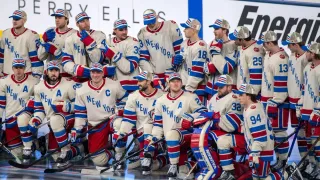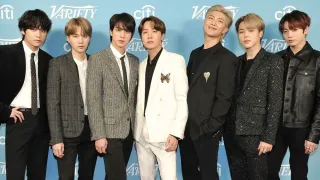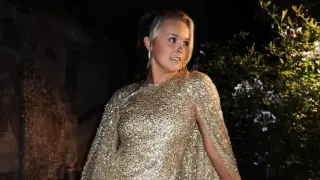January 2, 2019
Cuomo Vows New York Will Lead Nation with Progressive Agenda
Stephen R. Groves READ TIME: 3 MIN.
Sounding like the presidential candidate he insists he is not, New York Gov. Andrew Cuomo unleashed an energetic attack against President Donald Trump's policies Tuesday, pledging New York will lead the nation forward with the most progressive agenda in state history.
The Democrat began 2019 and his third term with the inaugural address on Ellis Island, saying "America's only threat is from within."
Cuomo said that within the first 100 days of his new term, he will propose "the most progressive agenda this state has ever seen, period."
"We will make history, and New York will move forward, not by building a wall, my friends, but by building new bridges, and building new airports and creating new middle class jobs and an economic future for the next generation and showing how good we can be at all of this when we are together," he said, apparently referencing the political fight over a wall on the Mexican border.
Cuomo said the country was facing a great "social depression."
"People's frustration's turning to fear and the fear's turning to anger and the anger's turning to division. It is impossible to overstate how dangerous, how malignant this condition is," he said. "The threat is when we see ourselves as black or white, foreign or native born, instead of as Americans. As Christians or Jews or Muslims, gay or straight, instead of as Americans. That, my friends, is truly frightening."
He faulted the federal government, saying politicians had exploited the fear and frustration that many Americans feel to deepen divisions "for their own political purpose." He said some of the nation's leaders had demonized diversity to "make our differences our greatest weakness instead of our greatest strength."
He made clear that he chose to deliver the nearly 30-minute speech from a famous landmark linked to immigration that remains open, along with the nearby Statue of Liberty, despite a partial federal government shutdown because of money supplied by the state.
"The federal government may shut itself down, but it will never extinguish the Statue of Liberty's torch," he said. "They will never close our harbor. They will never close our hearts. They will never close this hall of dreamers."
Ellis Island was the nation's busiest immigration station for decades, welcoming millions of immigrants from around the world. Cuomo has called it an "enduring symbol" of America's core values of hope and opportunity.
He highlighted the immigrant roots of many prominent Americans, including Trump, Vice President Mike Pence, former Secretary of State Colin Powell and Supreme Court Justice Ruth Bader Ginsburg.
With the battle over immigration policy raging nationwide, the speech's location is likely to encourage speculation that Cuomo may run for president, though the 61-year-old has said he has ruled out the idea.
He became emotional as he recalled that his father – a former New York governor who also rejected those who urged him to run for president – died on inauguration day four years earlier, but he said he knows that Mario Cuomo's "spirit lives."
"I can hear his voice, and I can imagine his pain and anger if he could see his beloved country today," the son said.
"He would say: 'This is an outrage. This is un-American. It violates everything we fought for. It violates everything we believe in.' And he would implore us all, each and every one, to stand against the tide, to fight back, and that New York should lead by example, by the power of our example, and lift up New York to show the nation the way forward," Cuomo said.
Cuomo won re-election last fall. He has listed legalizing recreational marijuana, codifying abortion rights and fixing New York City's subways as three priorities for the new year.






